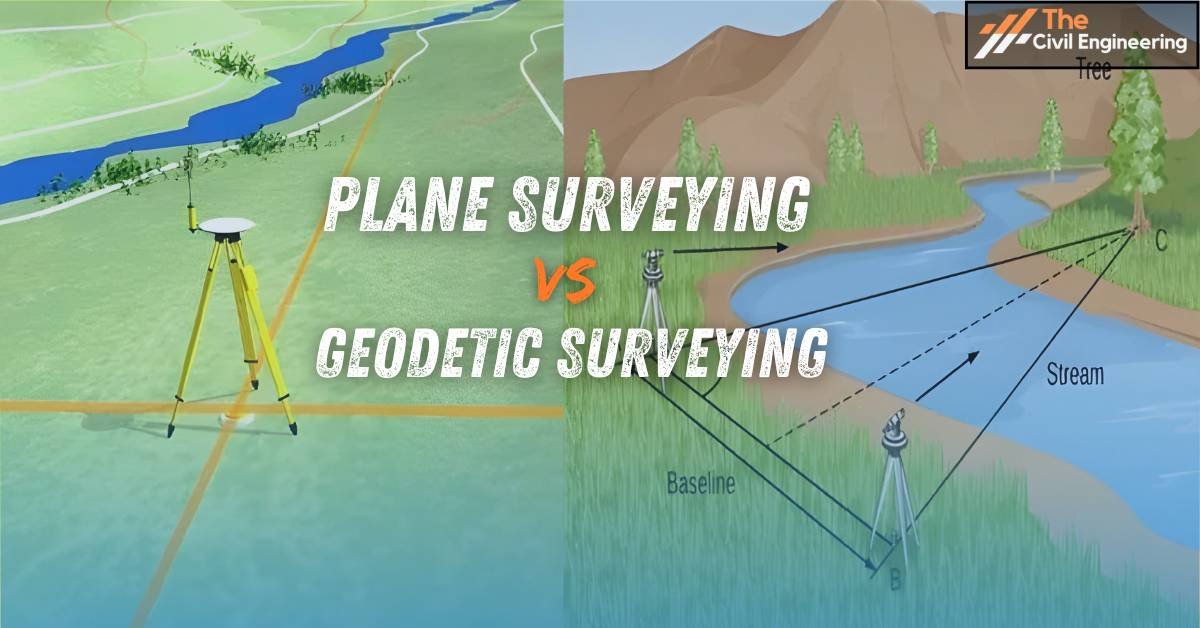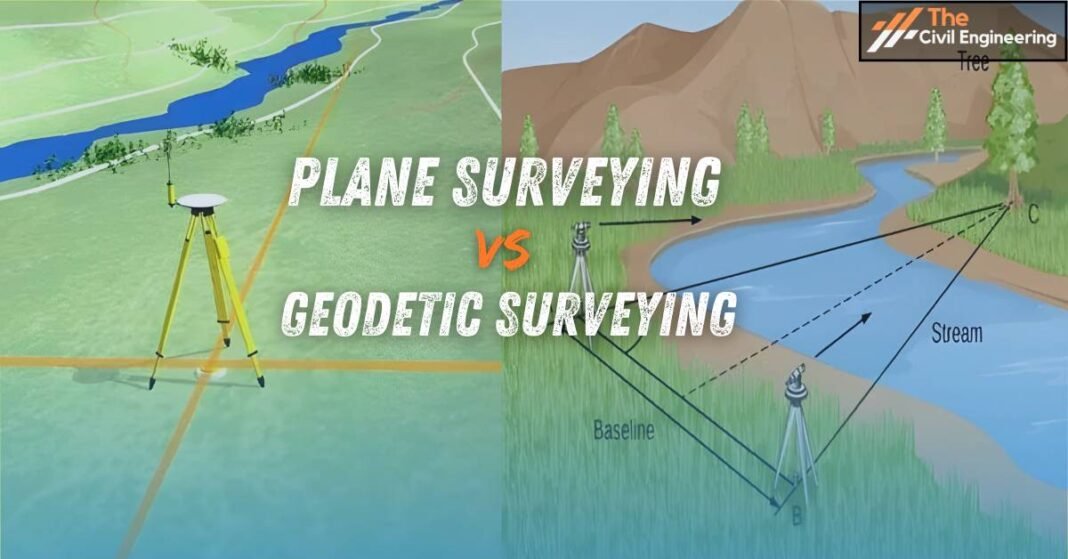In this article, we will discuss the difference between plane and geodetic surveying.
1. Introduction
Based on the curvature of the earth’s surface, surveying is divided into 2 categories;

A. Plane surveying
The type of surveying in which the curvature of the earth’s surface is not taken into consideration is known as plane surveying. The surface is assumed to be straight.
B. Geodetic Surveying
The type of surveying in which the curvature of the earth’s surface is taken into account for greater accuracy is known as geodetic surveying. The surface is considered to be spherical.
2. Difference between Plane and Geodetic Surveying
Difference between the plane surveying and geodetic surveying is given below;
| S.N | Plane Surveying | Geodetic Surveying |
| 1 | Earth’s surface is assumed to be straight. | Earth’s surface is taken as spherical. |
| 2 | The degree of accuracy is comparatively low. | The degree of accuracy is high. |
| 3 | The level line is considered straight. | The level line is considered spherical. |
| 4 | All plumb lines are considered to be parallel. | Plumb lines are not parallel. |
| 5 | Done relatively for small area <250 sq.km and for less precise work. | Carried out for large area > 250 sq. km and for precise work. |
| 6 | It is economical. | It is costly. |
| 7 | Knowledge on simple instruments, plane trigonometry is enough. | Knowledge of spherical trigonometry is essential. |
| 8 | Instruments like tape, chain, theodolite, etc are used. | Precise instruments and modern technology like GPS are used. |
| 9 | Carried out by private organizations and firms. | Carried out by state departments and government. |
| 10 | The triangle formed by joining 3 points is assumed to be plain. | The triangle formed by joining 3 points is assumed to be spherical. |
| 11 | Its objective is to prepare plans, collects details (topographic feature ), etc. | Its objective is to find out the precise position of a feature or point on Earth’s surface. |
| Read More: Difference Between 33, 43 and 53 Grade Cement |
| Read More: Principles of Surveying |

